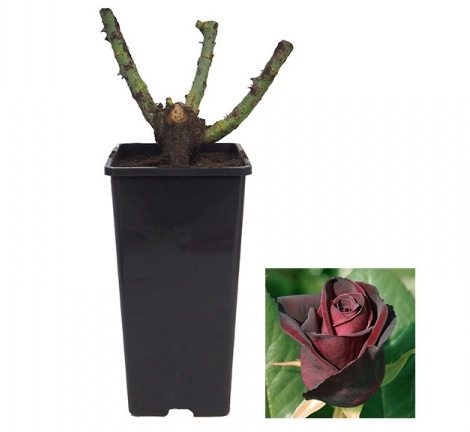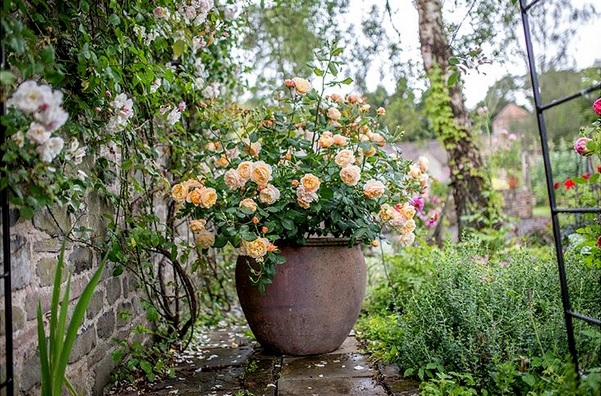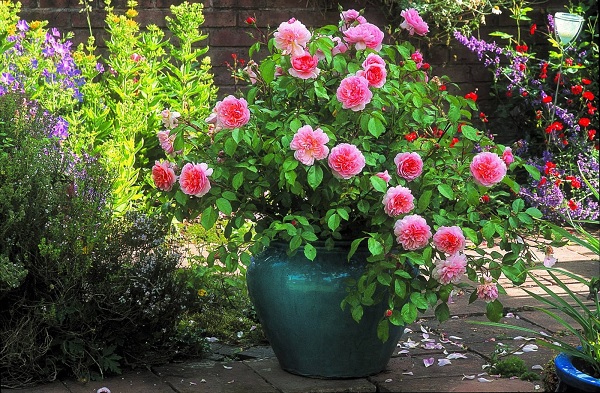
Roses add cheerful color and fragrance to a garden – our step-by-step guide to planting them will give you an expert head start
Loved for its elegance and romanticism, the rose is a garden favorite. Available in a huge variety of colors, sizes and with a wide variety of fragrances. Where and how to plant long-flowering roses that can please your garden from June to December?

Even if you don’t have many ideas for a rose garden in your own backyard , roses are incredibly generous. Therefore, you can usually enjoy the sight and aroma of one spilling from a neighbor’s garden or even growing in a hedge.
WHERE TO PLANT ROSES
Knowing where to plant roses depends largely on the variety. Roses are very versatile, with hundreds of varieties, from climbers and climbers, to shrubs and bushes, and even ground cover roses – there is a type of rose for almost every garden situation.
Before planting, it is important to choose a cultivator appropriate for the conditions of the chosen position.
In general, all roses require plenty of sunlight, at least four hours a day, as well as protection from strong winds. However, there are even varieties that can be grown in north-facing positions with poor soil quality.
Roses will not like a waterlogged position, but will like soil that retains water but drains well, and will not thrive in shade or if crowded by other plants. If planting multiple bush roses, be sure to leave a spacing of around 40-65cm and about 30cm from the edge of the rose bed.
CONTAINER GROWN ROSES OR BARE ROOT ROSES?
There are two ways to purchase roses: as container-grown plants or as bare root plants.



Bare root plants are usually purchased online or by mail order and come in a semi-dormant or dormant state with no soil on the roots. They are the preferred choice of many gardeners. “Bare root roses are generally the best quality and have a greater root spread than potted plants.”
If several rose bushes are planted, it is recommended to buy bare root plants since it is more economical and there is also a great variety.
WHEN TO PLANT ROSES
Knowing when to plant roses is important for growing them successfully.
“June to August is a good time to take note of the roses you like the most and want to introduce into your garden. Try to wait to buy and plant them until fall or winter, when you can order them bare root.
Bare root roses can be purchased from late fall to early spring and are best planted just before or at the beginning of their dormant period in late fall or early winter. This gives them time to establish roots ready to bloom in summer.
Container-grown roses can be planted at any time, as long as the soil is not extremely dry or frozen.
HOW TO PLANT ROSES
How to plant roses will vary slightly depending on the type of rose you choose, whether climbing, standard or bush. The step-by-step instructions below are for planting a bare root shrub rose.
If replacing old roses with new ones, care should be taken “It is recommended to dig up the soil to a depth and width of 45cm and replace it with soil from another part of the garden to reduce the risk of replanting diseases.
WILL NEED:
- garden fork or shovel
- Bucket
- Watering can
- Soil improver or well-rotted manure
1. REVIEW CONDITIONS AND ROOTS
Try to plant the rose as soon as possible after its arrival, but delay planting if the ground is waterlogged or frozen. Examine the rose to make sure it has not dried out in transit. The rose should have two or three strong shoots and a healthy network of routes. Remove any diseased or damaged growth and remove any cluttered stems.
2. MOISTURIZE THE ROSE
Soak the bare root rose in a bucket of water for one to two hours before planting.
3. PREPARE THE LAND TO PLANT ROSES
Prepare the bed by digging with a garden fork and removing any stones or weeds. Dig a planting hole in your prepared bed large enough to accommodate the roots; This will depend on their wingspan and length, but a hole around 40cm wide and 40cm deep should be adequate.
Roses are hungry plants, so add a shovel of soil amendment or well-rotted manure to the hole and work it into the soil at the bottom.
4. POWERFUL THE ROOTS
Before planting the rose, consider spraying the roots with mycorrhizal fungi, this will increase absorption and boost the performance of the root system.
5. PLACE THE ROSE IN THE HOLE.
Place the rose in the center of the hole being careful to spread out the roots. At this point, it is important to ensure that the rose graft, where the stems meet the roots, is buried about an inch below the soil. To help check this, you can place a bamboo pole horizontally over the hole.
6. FILL AND FINISH THE PLANTING
Refill the hole with soil, dipping in a shovel of soil amendment or manure before backfilling. Tread lightly around the rose to make sure there are no air pockets, then rake the soil and water well.
HOW TO PLANT ROSES GROWN IN CONTAINERS
There is no rush when it comes to planting roses in containers, they can be left outside three weeks or more before planting, as long as they are kept watered. Before planting place in a bucket of water until the moisture reaches the surface of the compost and follow the same steps as above.
HOW TO PLANT ROSES IN POTS
If you have space limitations, roses can also be grown in pots. You will need a large pot with drainage, about 30-45cm deep. Place clay pots on the bottom for easy drainage and fill with standard loam potting compost. Place the rose in the pot and fill with compost, followed by a good water.
‘Water potted roses and feed them with a liquid feed every few weeks. Patio roses like ‘Queen Mother’ are best for growing in pots.’
‘They should be planted in a pot that is at least 40 cm deep. Be sure to use a soil-based compost that contains water and nutrients.’
HOW TO CARE FOR ROSES
“Much of the work that goes into keeping roses healthy should have been done before spring.” That would include pruning to prevent them from becoming congested. Additionally, mulch to feed the soil, trap moisture, and bury fungal spores.
However, there are still some jobs to be done throughout the year. These are the ones for caring for roses.
HOW TO CUT DEAD ROSES
“While traditional climbing roses tend to bloom once, in great profusion, modern roses that bloom repeatedly start more slowly, but send up new blooms all summer long.”
‘Repeating flowering roses, such as climbing and hybrid tea roses, to encourage more flowers.
‘Use scissors or pruning shears to cut off spent flowers, cutting just above a leaf, from where the new flower bud will form.
‘Stop heading in late summer to let some hips form for the birds,’ he adds.
How to cut dead roses : to get more flowers in a matter of weeks
WHEN SHOULD YOU PRUNE ROSES?
Be sure to prune them before they leaf out to avoid damaging the buds and buds, ideally in October or November, but you can get away with it as late as February, depending on the climate and where you live in the country.
“For those who live in the north, where some roses have not yet put out leaves, they could bend in spring.”
If your roses still look dormant and do not have buds yet, you can still perform pruning.
This Sissinghurst Rose Pruning Tip – This Will Boost Your Blooms
HOW TO GET RID OF APHIDS ON ROSES?
‘Beware of pests such as aphids and sawfly larvae.’ “Most roses can host some aphids, which provide a food source for other insects and small birds. But if an infestation is affecting the health of your rose, you can try crushing it by hand or using an organic insecticide.
‘There are no products to treat the caterpillar-like sawfly larvae, and the roses will soon recover when they mature and leave the plant.’
HOW TO TREAT BLACK STAIN ON ROSES
‘Unfortunately, fungal diseases such as mold and black spot are very common. “They tend to be worse when roses are stressed by drought, poor soil quality or overcrowding.”
“If your rose has a small amount of mold or black spot, you can remove the affected leaves to try to slow the spread.” Feeding it with liquid, and even spraying the foliage with a foliar feed, rose tonic, or plant invigorator, can also help improve its health.
How to Take Rose Cuttings : Tips for Propagating Roses
‘If the plant is severely affected, you may want to try a fungicide. Look for products that do not contain an insecticide, which can harm pollinating insects. fungicida. Busque productos que no contengan un insecticida, que puede dañar a los insectos polinizadores.



